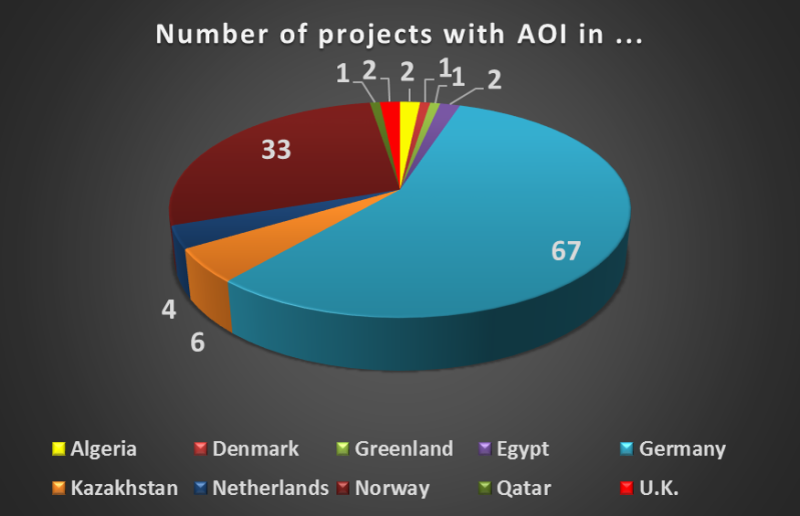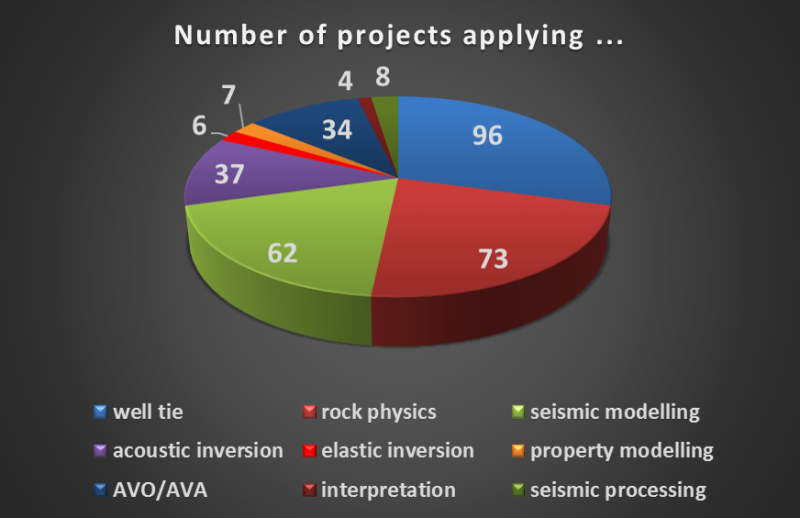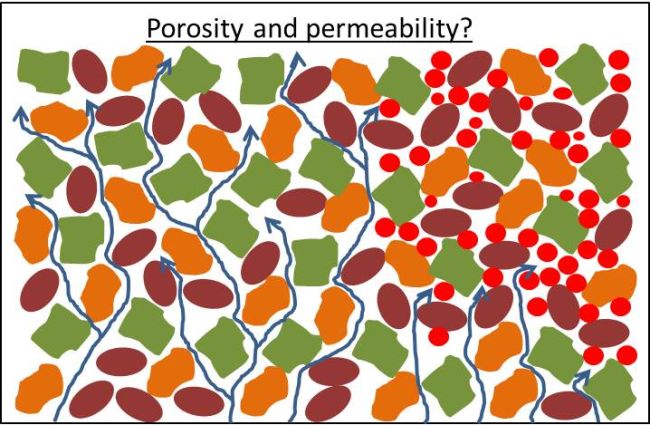Publications Thomas Rühl
-
Tauchwellen-Tomographie für Stripping Korrekturen und geologische Interpretationen bei den reflexionsseismischen KTB-Profilen im Schwarzwald. Master Thesis (Diplomarbeit), University of Karlsruhe, Geophysical Institute. („Diving wave tomography for static corrections and geologic interpretations at the KTB 2D seismic survey line in the Black Forest“).
T. Rühl (1987) -
Near-vertical and wide-angle seismic surveys in the Black Forest, SW Germany. J. Geophys., 62: 1-30.
E. Lüschen, F. Wenzel, K.-J. Sandmeier, D. Menges, T. Rühl, M. Stiller, W. Janoth, F. Keller, W. Söllner, R. Thomas, A. Krohe, R. Stenger, K. Fuchs, H.Wilhelm and G.Eisbacher (1987) -
Near-vertical and wide-angle seismic surveys in the Schwarzwald. In R. Emmermann and J. Wohlenberg, editors, The German Continental Deeo Drilling Program (KTB), p. 297-362. Springer Verlag.
E. Lüschen, F. Wenzel, K.-J. Sandmeier, D. Menges, T. Rühl, M. Stiller, W. Janoth, F. Keller, W. Söllner, R. Thomas, A. Krohe, R. Stenger, K. Fuchs, H.Wilhelm and G.Eisbacher (1989) -
Oberpfalz deep seismic reflection survey and velocity studies. In R. Emmermann and J. Wohlenberg, editors, The German Continental Deeo DrillingProgram (KTB), p. 99-149. Springer Verlag.
J. Schmoll, R. Bittner, H.-J. Dürbaum, T. Heinrichs, R. Meißner, C. Reichert, T. Rühl and H. Widerhold (1989) -
Seismische Untersuchungen an der KTB-Lokation. KTB Report 89/1, DEKORP Report, p. 169-210.
U. Kästner, K. Bram, P. Hubral, W. Kiefer, C. Köninger, C. Macdonald, J. Merz, T. Rühl and K.-J. Sandmeier (1989) -
Inversion of first-break traveltime data of deep seismic reflection profiles. Geophysical Prospecting, 38, 3, 247-266.
T. Rühl and E. Lüschen (1990) -
Theoretische Grundlagen und praktische Anwendungen der Diffraktions-tomographie in der Geophysik. Doctoral Thesis (Dissertation), University of Karlsruhe, Geophysical Institute. (“Theoretical foundations and practical application of diffraction tomography in geophysics”).
T.Rühl (1991) -
Evalution and interpretation of VSP-measurements in the KTB-Oberpfalz pilot borehole. Scientific Drilling, 3, 89-99.
A. Hohrath, K. Bram, C. Hanitzsch, P. Hubral, U. Kästner, E. Lüschen, T. Rühl, P.K. Schruth and W. Söllner (1992) -
Migration of steeply dipping reflectors at the KTB site: Depth errors caused by inaccurate velocity models. KTB Report 92-5, DEKORP Report, 333-341.
C. Hanitzsch, P. Hubral., T. Rühl and W. Söllner (1992) -
Detection of permeable fracture zones by tube waves in the KTB pilot hole. KTB Report 92-5, DEKORP Report, 309-332.
C. Hanitzsch, T. Rühl and B.B. Heinemann (1992) -
Average and interval velocities derived from first breaks of vertical seismic profiles at the KTB pilot hole. KTB Report 92-5, DEKORP Report, 201-219.
T. Rühl and C. Hanitzsch (1992) -
Fourier finite-difference migration. Geophysics, 59, 12, 1882-1893.
D. Ristow and T. Rühl (1994) -
Determination of shallow refractor properties by 3D-CMP refraction seismic techniques. First Break, 13, 2, 69-77.
T. Rühl (1995) -
Fourier finite-difference migration for steeply dipping reflectors with complex overburden. Geophysical Prospecting, 43, 7, 919-938.
T. Rühl, C. Kopp and D. Ristow (1995) -
Frequency-space domain diffraction tomography in practical applications. Journal of Seismic Exploration, 5, 141-156.
T. Rühl and P. Hubral (1996) -
Finite-difference migration derived from the Kirchhoff-Helmholtz integral (Short Note), Geophysics, 61, 5, 1394-1399.
T. Rühl (1996) -
3-D implicit finite-difference migration by multiway splitting. Geophysics, 62, 2, 554-567.
D. Ristow and T. Rühl (1997) -
Optimized operators for 3-D Fourier Finite-Difference migration. Journal of Seismic Exploration, 6, 4, 367-383.
D. Ristow and T. Rühl (1997) -
Migration of the 3-D deep-seismic reflection survey at the KTB location, Oberpfalz, Germany. Tectonophysics 271, p 135-156.
M. Körbe, M. Stiller, H. Horstmeyer and T. Rühl (1997) -
Multi-attribute Bayesian risk modification –a case study from the Norwegian Barents Sea. First Break, 35, 1, 51-58.
T. Rühl and J. Samuelsson (2017)
DR. THOMAS RÜHL
Thomas is owner and chief geophysicist of Amisia GeoConsultants. He studied geophysics at Karlsruhe University in Germany, where he also made his doctoral thesis (Ph.D.). From 1987-1997, Thomas worked in academia, mainly on reflection seismic inversion and migration algorithms. Since 1997, he works in the oil and gas industry at various companies. His field of expertise is seismic reservoir characterization (SRC) or Quantitative Interpretation (QI). At Amisia GeoConsultants, Thomas is responsible for all geophysical SRC projects and topics.
-
2019-Amisia-GeoConsultants in Lingen (Germany); Chief Geophysicist, seismic reservoir characterization projects
-
2018-2019Neptune Energy in Lingen; Senior Geophysicist, seismic reservoir characterization projects for German and international assets
-
2003-2018Gaz de France, GDF Suez, ENGIE in Lingen; Senior Geophysicist, seismic reservoir characterization projects for German and international assets
-
2001-2003Preussag Energie in Lingen; Senior Geophysicist, seismic processing and reservoir characterization projects
-
1997-2001Petroleum GeoServices (PGS) in Oslo (Norway); Principal Geophysicist, seismic reservoir characterization projects for clients of PGS Reservoir AS/PGS Reservoir Consultants AS
-
1992-1997GEOMAR research centre at Kiel University (Germany); Scientific employee, research on new migration algorithms (Fourier FD), supervision of students, lectures
-
1991Dissertation / doctoral thesis about diffraction tomography
-
1980-1987University studies (geophysics, geology) at Karlsruhe Technical University (Germany) and Technical University (ETH) of Zurich (Switzerland)
-
1979-1980Military service
-
1966-1979Primary and secondary school
-
1960Born at Siegen (Germany)
International E&P projects and experience


UTA RÜHL
Your challenges

This is one of the fundamental questions in each E&P project, already at exploration stage, when a prospect has to be risked, but also later during appraisal and development of the field. Reservoir quality is one essential parameter for a good, highly productive well or field. We like to know as early as possible, whether there is a tight reservoir or a high porosity/permeability reservoir. Porosity determines the storage capacity of the reservoir. Porosity can usually be predicted from post- or pre-stack seismic data very well. Permeability, which is also mandatory for an economic production of the reservoir, cannot be directly derived from seismic in most cases. We need a certain poro-perm relation, and usually higher porosity is accompanied by higher permeability.

Another fundamental question is the kind of fluid in the pore space of the reservoir; does the reservoir contain brine, oil or gas? This is relevant both for green field projects as well as brown field developments. Seismic data are usually very sensitive to highly compressible pore fluids such as gases (methane but also CO2) or steam. But in several cases, oil, especially that with a high GOR, can be discriminated from brine. After some production has occurred, the related saturation and pressure changes can often be identified and mapped with multiple 3D seismic measurements (4D or time-lapse seismic method).

An important risk factor in exploration is the sealing capacity of the overburden of a reservoir and of the bounding faults. We use seismic data to analyse the sealing formation with respect to possible faults and large-scale fractures, sometimes using special attributes. We look for leakage phenomena such as gas clouds or chimneys. Thinning sealing formations may require a tuning analysis. Seismic inversions can be used in an indirect manner to judge the sealing capacity of faults by comparing elastic layer properties on both sides of the fault.

Another important question could be whether your reservoir is fractured or not. This question should definitely be raised when we have a carbonate or a tight sandstone or an unconventional reservoir. If the overburden is not too complex and the seismic data quality is excellent, a seismic fracture characterization (SFC) project could be successful. Such a project could deliver information about the presence, density and orientation of fractures and joints.

Contact
Amisia-GeoConsultants
Am Holländerberg 3
D-21465 Reinbek
Germany

